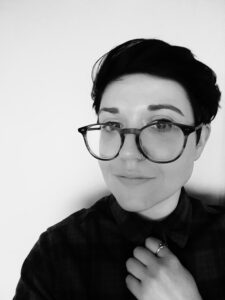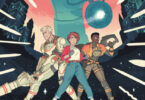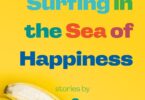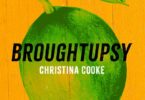Lor Gislason, Inside Out (Darklit Press, 2022), 112 pp., $19.
Inspired by classic horror movies like Chuck Russell’s 1988 remake of The Blob, Lor Gislason’s debut novella Inside Out is gross and visceral. The story opens in a remote mining camp in British Columbia, as a strange condition begins to spread across North America. The infection causes bodies to melt together and restructure themselves into something new: monstrous creatures comprised of mis-matched body parts and oozing flesh.
In terms of both structure and narrative, Inside Out challenges the boundary between the singular and the plural, the individual and the collective. The novella is divided into sixteen short segments. Though they are loosely connected, each segment is also its own self-contained narrative. The narrators, stories, settings, and perspectives in each segment vary widely— ranging from children and teens to scientists and landlords. The similar threat they are facing is described from many, often conflicting, points of view. These fragments, like the fragmented and deformed bodies that make up the goopy monstrosity at the center of the story, come together to form a whole that is more than the sum of its parts.
Like the gooey, pink monster from Russell’s film, Gislason’s creatures break down the human body. While the creature in The Blob burns through human flesh, melting bones and distorting bodies into a horrific non-human mass, the “Outers,” as the creatures in the novel come to be known, are more clearly human. Or, human-ish. “The worst thing about Outers,” the narrator of one segment, a member of a gang of young people who roam the streets hunting Outers, explains, “is how much you can tell, deep down, they were once a human.” The creatures resemble a human body turned inside-out, “All wet flesh and organ meat moving around.”
The once-human monsters in Gislason’s novella are a source of anxiety for some, but for others they offer comfort, the promise of love and acceptance, and even spiritual fulfillment. Early in the book, in the segment titled “The Institute,” a scientist named Laurie watches as her wife is absorbed by one of the creatures. Frozen, Laurie sees Alex “[reach] down with both hands and [touch] the flesh as if it was a lover, savouring the way it felt, the softness under her hands, warm and wet.” The use of the word “lover” suggests both physical and emotional intimacy. Alex does not see the creature as a threat. In fact, even as she’s confronted by the stench and gore of it, she is drawn to it and views it as something comforting. Rather than resisting the creature, Alex moves toward it and embraces it.
Alex isn’t the only queer character that is drawn to the Outers. Cassie, the protagonist of the segment called “The Zit,” is a transgender teen trying to survive the horrors of high school. The other girls bully and misgender her. And, on top of everything, there is a pimple “resembling an engorged tick embedded in Cassie’s face.” The pimple at first seems to represent the grief and rage that Cassie is forced to supress at school. But, when she finally pops it, and is consumed by the thing inside, she isn’t afraid. Instead, “[h]er entire body [feels] warm and tingly and not entirely unpleasant.”
When she looks in the mirror, “[l]ooking back at her [is] a tall slender woman with the longest hair she’[s] ever seen.” Cassie sees herself transformed into a version of the woman she wants to be. And, when she touches her body she feels comfort, “like being wrapped in a blanket after a long day.” Rather than a painful, horrific death, Cassie finds joy and self-acceptance in her transformation.
The creatures are associated with queerness throughout the story. Not only do queer characters find love and acceptance when the creatures consume them, but the very name “Outers” suggests a “coming out,” the beginning of the process of living openly as a queer person. As they break down human bodies, the creatures also break down normative categories of gender. Binary distinctions between man and woman or self and other dissolve. One young narrator who observes her parents’ transformation notes that “Mom and Dad were stuck together at the lips, skin that was once two people, now one.” Not only do her parents cease to be individuals, but “Hairs from her father’s stubble mingled with smears of her mother’s lipstick.” Features of her father that characterized his masculinity combine with markers of her mother’s femininity, blurring the boundary between genders.
By presenting us with characters that respond in unexpectedly positive ways to the threat of the Outers, the book asks the reader to question their initial reaction to the monsters. If some find love and acceptance in what others fear and misunderstand, could monstrosity be merely in the eye of the beholder?
This isn’t a new question. Horror has always been about testing, and breaking, boundaries. But Gislason approaches these concerns from a fresh angle. The fragmented structure of the novella mirrors the mutated and dismembered bodies at the center of the story, while also offering a mosaic of different human perspectives and responses to the phenomenon of the Outers.
As the reader moves through the book, they find out more about where the creatures come from and what they are. Unlike the post-modern monster in The Blob, which turns out to be a dangerous experiment created by the United States government, the phenomenon of the Outers is neither an alien from another world nor an accident of human invention. Instead, it is a child of the earth itself: a fungal species disturbed by mining. Or, as one character puts it, they are simply the result of “organisms living in extreme conditions.”
The cause of the Outers, then, is a natural one. In fact, it’s something that has been with us all along, an organism whose existence predates our modern world. The “spongey, red moss” only becomes a problem when it encounters industry and capitalism. Rather than leaving the newly discovered organism alone, researchers at a pharmaceutical company are tasked with trying to find a marketable use for it.
Gislason approaches urgent topics like class, gender, and the exploitation of our planet’s natural resources with punchy prose and dry wit. Inside Out asks more questions than it answers, but perhaps that is the point. The novella’s insistence on defying boundaries and easy classification encourages the reader to examine their own anxieties and unconscious prejudices.
While some readers may squirm at the descriptions of melted bodies, I found that I saw something of myself in Gislason’s creatures. Many people in North American society still view queer and trans bodies and lives as undesirable, or even monstrous. But for many LGBTQ2S+ people, fully embracing a life of love and self-acceptance outside of heteronormativity and the gender binary can bring us joy and peace. The Outers spark hatred and fear in many of the characters, but this perspective is not universal. Particularly for the queer and trans characters in the novella, the Outers promise a new way of life free from loneliness and pain. They remind us that where some find horror, others simply find home.
…
 Shannon Page (they/she) is a writer, film critic, and educator living on the unceded territory of the Musqueam, Squamish, and Tsleil-Waututh peoples. Their stories have appeared in Plenitude Magazine, Grain, Foglifter, and elsewhere. You can find them on Twitter at @ShannonEvePage.
Shannon Page (they/she) is a writer, film critic, and educator living on the unceded territory of the Musqueam, Squamish, and Tsleil-Waututh peoples. Their stories have appeared in Plenitude Magazine, Grain, Foglifter, and elsewhere. You can find them on Twitter at @ShannonEvePage.







